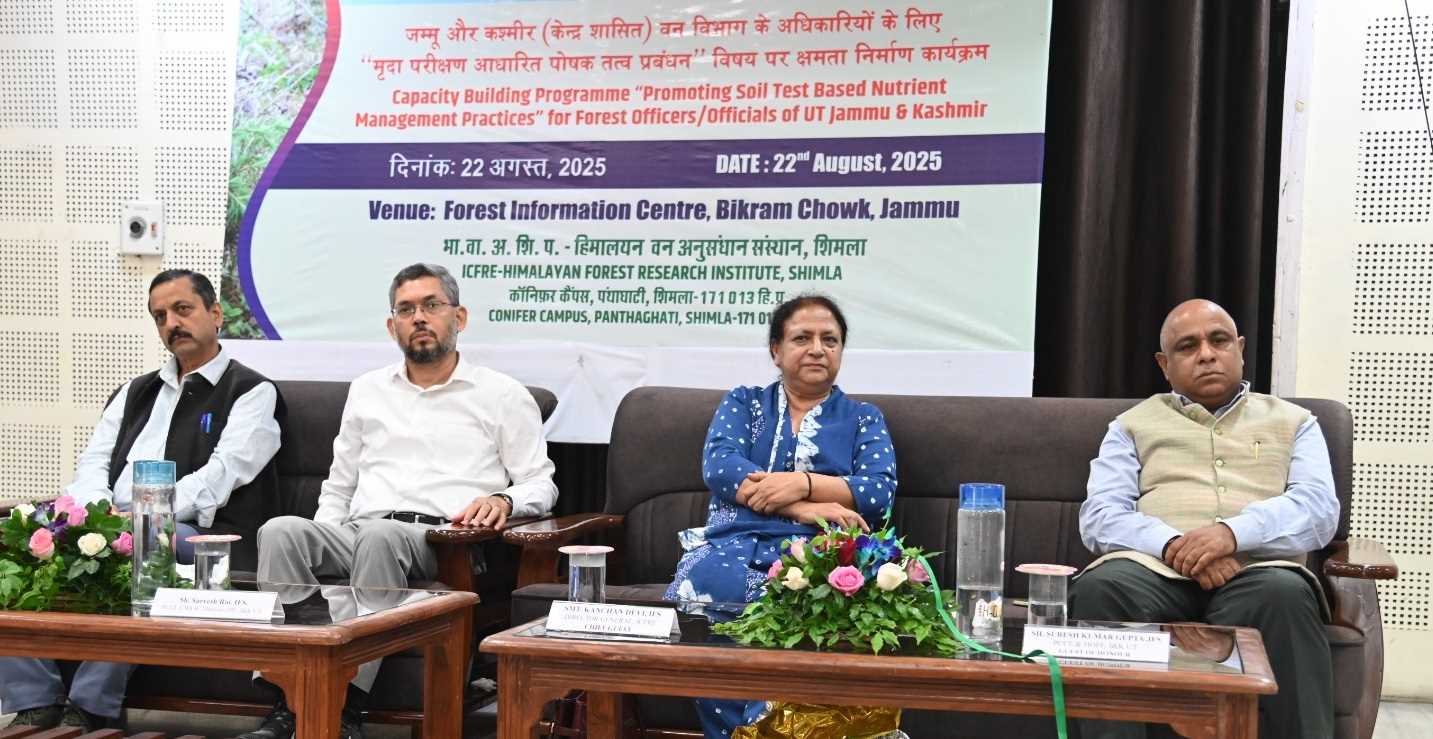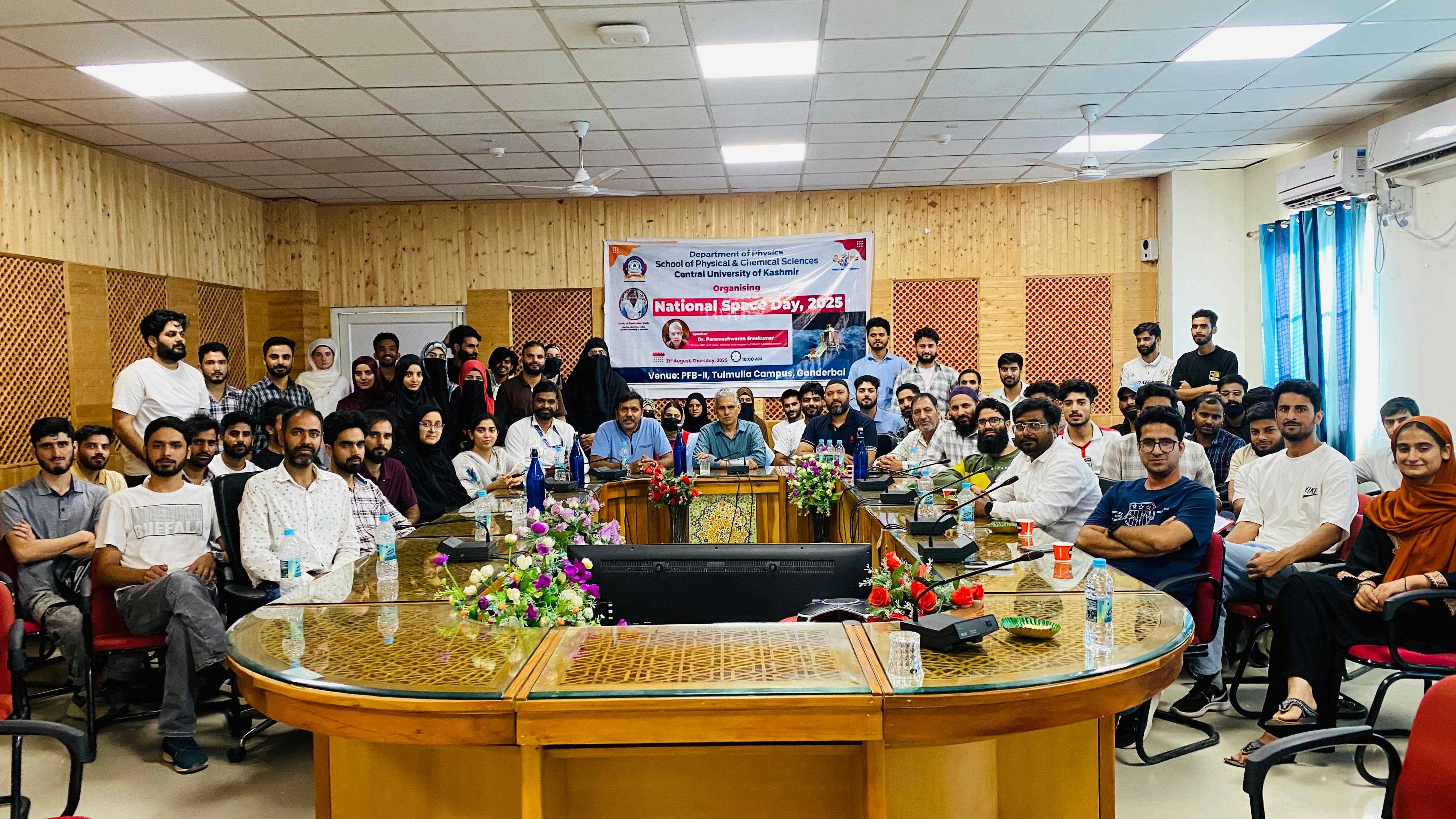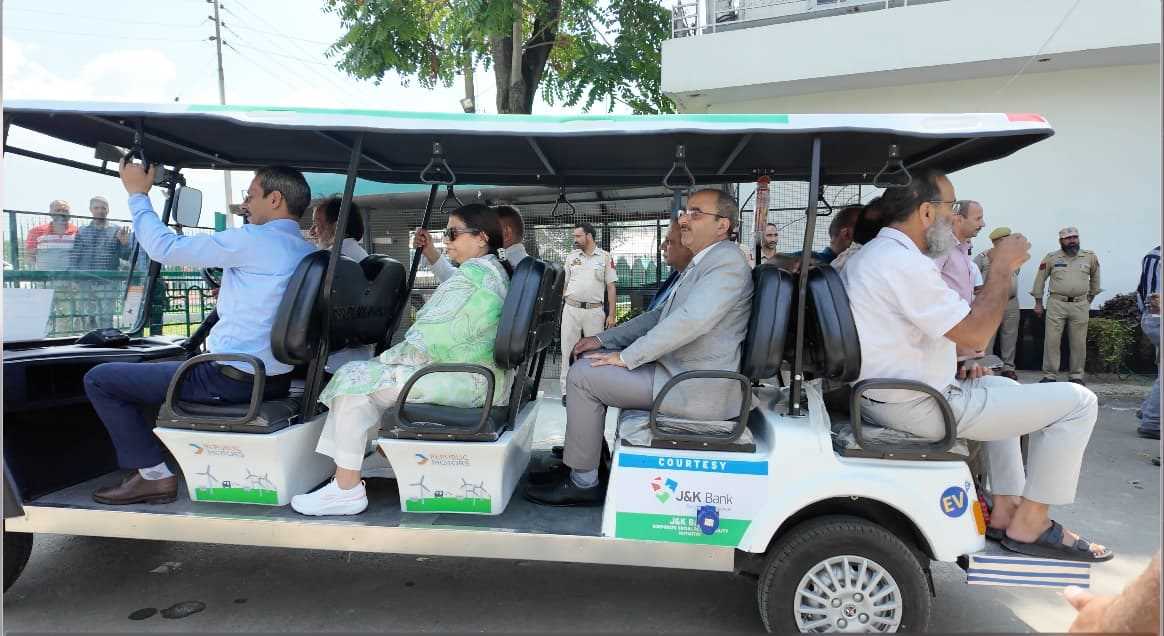
Director Panchayati Raj, Sham Lal, on Friday chaired a review meeting with all Assistant Commissioners Panchayats (ACPs) to assess the progress on flagship “Project for Creating 250 Model Gram Panchayat (GP) Clusters”.
Jammu and Kashmir has been allotted six clusters under the scheme in Anantnag, Samba, Kupwara, Jammu, Reasi and Udhampur.
The Director explained that the Project for Creating Model GP Clusters is a flagship initiative of the Ministry of Panchayati Raj (MoPR), Government of India, aligned with Article 243G of the Constitution. He said the project aims to strengthen the selected Gram Panchayats as replicable models of self-governance through structured Gram Panchayat Development Plans (GPDPs), enhanced citizen participation, adoption of digital governance, gender-inclusive planning and convergence of schemes for effective service delivery.
The Director asked the ACPs to ensure timely submission of reports and adopt a systematic approach in strengthening the Model Gram Panchayats. He emphasized the need to integrate convergence into GPDPs while addressing gaps identified in the Panchayat Assessment Index (PAI).
The focus, he said, should be on convergence of schemes, gap-filling measures and comprehensive planning that would help transform the selected GPs into replicable models of self-governance.
Sham Lal directed the ACPs and BDOs to identify gaps in GPDPs at the district and Panchayat levels and prepare detailed reports outlining how these could be addressed through development schemes. “We must take a forward-looking approach-what can be done now and what can be planned for the coming years,” he said, stressing the importance of prospective planning under various rural development programmes.
The Director further called for wider consultations with the district officers, ACPs and stakeholders to align GPDPs with the Sustainable Development Goals (SDGs). He urged officers to seek support from Young Professionals (PRAs) and ensure participatory planning with the involvement of all stakeholders to draw up a clear roadmap for achieving holistic Panchayat development.
Reviewing the deployment and functioning of Panchayati Raj Associates (PRAs) in J&K, the Director noted that while PRAs have been placed in Anantnag, Kupwara, Jammu and Udhampur districts to ensure smooth implementation of the initiative, vacancies in Samba and Reasi remain unfilled constraining progress in those clusters.
The Director highlighted district-wise achievements under the project.
In Kupwara (Trehgam Cluster), initiatives such as awareness on Panchayat digital apps, a zero-dropout school campaign, formation of WASH Committees for sanitation, the One Student-One Plant drive and strengthened school governance through Bal Sabhas were undertaken.
In Udhampur (Majalta Cluster), progress included skill training for Self-Help Groups (SHGs), improved agricultural practices, waste management initiatives, road connectivity through MGNREGA and promotion of women’s empowerment via gender-inclusive Gram Sabhas.
The Anantnag Cluster reported integration of GPDPs with MGNREGA, active participation of women through Mahila Sabhas, formation of WASH Committees in schools, awareness drives on the Forest Rights Act and convergence with line departments for holistic development.
In Jammu (Bhalwal Cluster), activities focused on sanitation, GPDP alignment, and awareness campaigns on child rights and welfare through Bal Sabhas.
However, the Director noted that the Ghagwal (Samba) and Katra (Reasi) clusters continue to face operational hurdles due to vacant PRA positions, which are constraining participatory planning and effective implementation.
The Director remarked that Model GP Clusters are “not just pilot projects; they are blueprints for strengthening grassroots democracy.”
Initially piloted by the National Institute of Rural Development and Panchayati Raj (NIRD&PR) from October 2021 to December 2024, the project has been directly implemented by MoPR since January 2025 through State Panchayati Raj Departments, State Institutes of Rural Development, State Programme Coordinators (SPCs), and PRAs (Young Fellows).
Currently, 62 PRAs and 4 SPCs are operational across 223 GPs in 18 States and 1 Union Territory. The Ministry is working to expand deployment to cover 250 clusters comprising 1,100 Gram Panchayats across 28 States and 4 UTs.




Director Panchayati Raj, Sham Lal, on Friday chaired a review meeting with all Assistant Commissioners Panchayats (ACPs) to assess the progress on flagship “Project for Creating 250 Model Gram Panchayat (GP) Clusters”.
Jammu and Kashmir has been allotted six clusters under the scheme in Anantnag, Samba, Kupwara, Jammu, Reasi and Udhampur.
The Director explained that the Project for Creating Model GP Clusters is a flagship initiative of the Ministry of Panchayati Raj (MoPR), Government of India, aligned with Article 243G of the Constitution. He said the project aims to strengthen the selected Gram Panchayats as replicable models of self-governance through structured Gram Panchayat Development Plans (GPDPs), enhanced citizen participation, adoption of digital governance, gender-inclusive planning and convergence of schemes for effective service delivery.
The Director asked the ACPs to ensure timely submission of reports and adopt a systematic approach in strengthening the Model Gram Panchayats. He emphasized the need to integrate convergence into GPDPs while addressing gaps identified in the Panchayat Assessment Index (PAI).
The focus, he said, should be on convergence of schemes, gap-filling measures and comprehensive planning that would help transform the selected GPs into replicable models of self-governance.
Sham Lal directed the ACPs and BDOs to identify gaps in GPDPs at the district and Panchayat levels and prepare detailed reports outlining how these could be addressed through development schemes. “We must take a forward-looking approach-what can be done now and what can be planned for the coming years,” he said, stressing the importance of prospective planning under various rural development programmes.
The Director further called for wider consultations with the district officers, ACPs and stakeholders to align GPDPs with the Sustainable Development Goals (SDGs). He urged officers to seek support from Young Professionals (PRAs) and ensure participatory planning with the involvement of all stakeholders to draw up a clear roadmap for achieving holistic Panchayat development.
Reviewing the deployment and functioning of Panchayati Raj Associates (PRAs) in J&K, the Director noted that while PRAs have been placed in Anantnag, Kupwara, Jammu and Udhampur districts to ensure smooth implementation of the initiative, vacancies in Samba and Reasi remain unfilled constraining progress in those clusters.
The Director highlighted district-wise achievements under the project.
In Kupwara (Trehgam Cluster), initiatives such as awareness on Panchayat digital apps, a zero-dropout school campaign, formation of WASH Committees for sanitation, the One Student-One Plant drive and strengthened school governance through Bal Sabhas were undertaken.
In Udhampur (Majalta Cluster), progress included skill training for Self-Help Groups (SHGs), improved agricultural practices, waste management initiatives, road connectivity through MGNREGA and promotion of women’s empowerment via gender-inclusive Gram Sabhas.
The Anantnag Cluster reported integration of GPDPs with MGNREGA, active participation of women through Mahila Sabhas, formation of WASH Committees in schools, awareness drives on the Forest Rights Act and convergence with line departments for holistic development.
In Jammu (Bhalwal Cluster), activities focused on sanitation, GPDP alignment, and awareness campaigns on child rights and welfare through Bal Sabhas.
However, the Director noted that the Ghagwal (Samba) and Katra (Reasi) clusters continue to face operational hurdles due to vacant PRA positions, which are constraining participatory planning and effective implementation.
The Director remarked that Model GP Clusters are “not just pilot projects; they are blueprints for strengthening grassroots democracy.”
Initially piloted by the National Institute of Rural Development and Panchayati Raj (NIRD&PR) from October 2021 to December 2024, the project has been directly implemented by MoPR since January 2025 through State Panchayati Raj Departments, State Institutes of Rural Development, State Programme Coordinators (SPCs), and PRAs (Young Fellows).
Currently, 62 PRAs and 4 SPCs are operational across 223 GPs in 18 States and 1 Union Territory. The Ministry is working to expand deployment to cover 250 clusters comprising 1,100 Gram Panchayats across 28 States and 4 UTs.
© Copyright 2023 brighterkashmir.com All Rights Reserved. Quantum Technologies